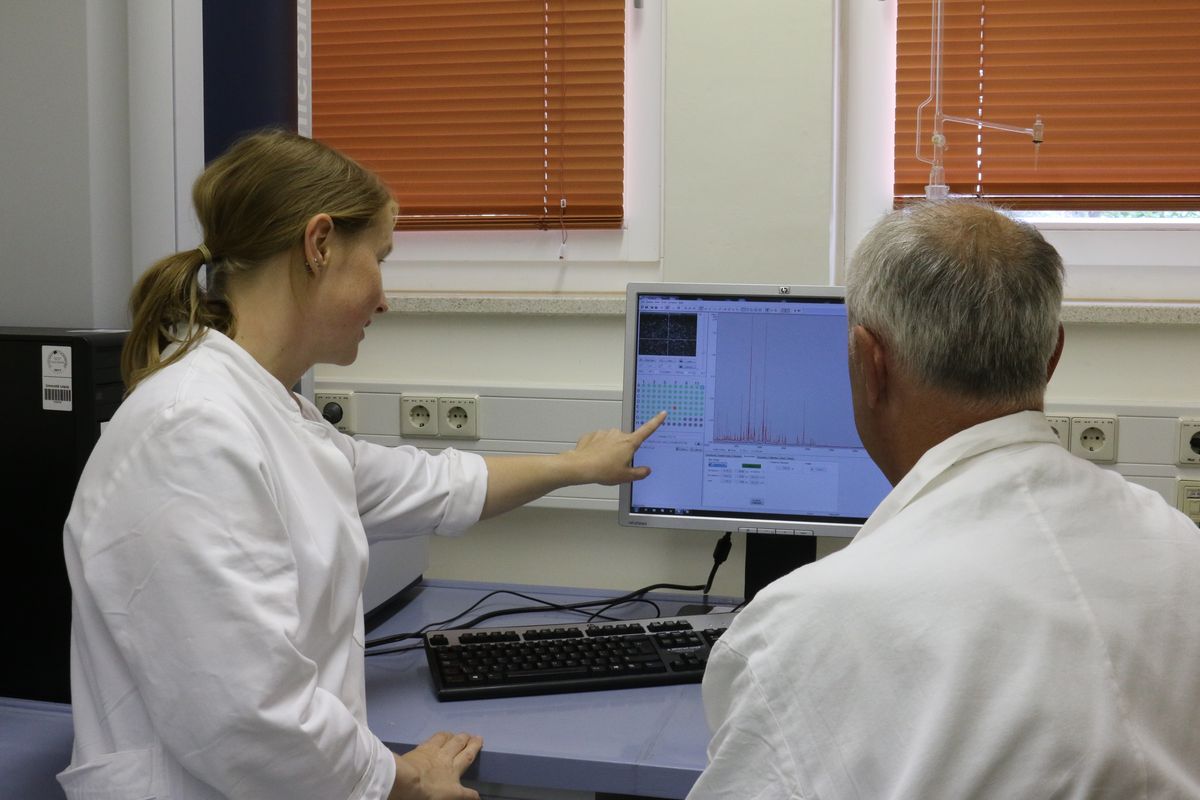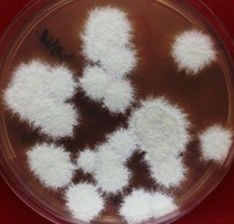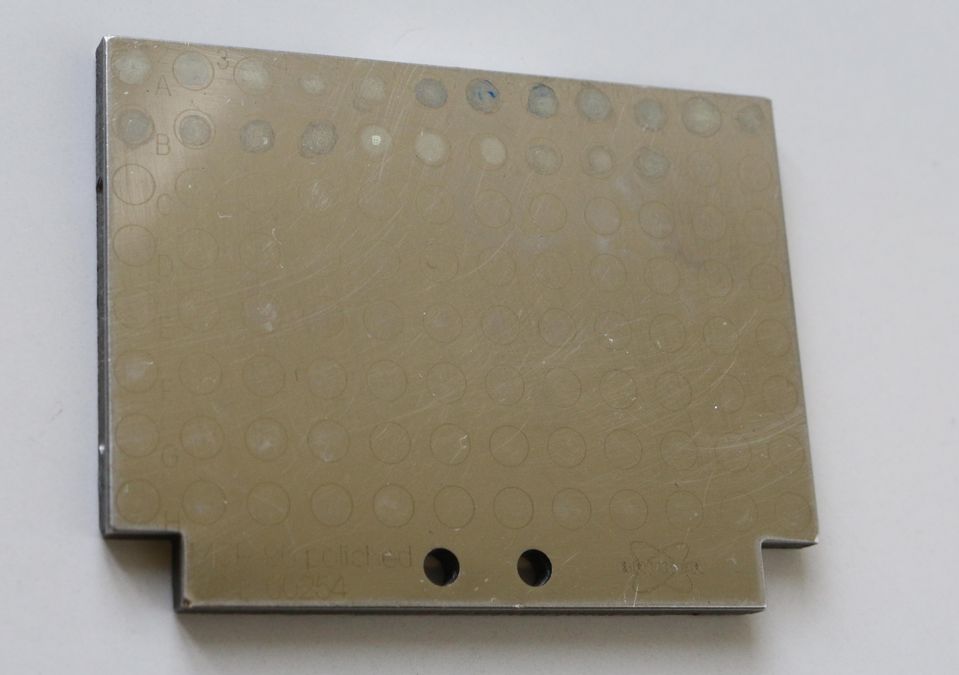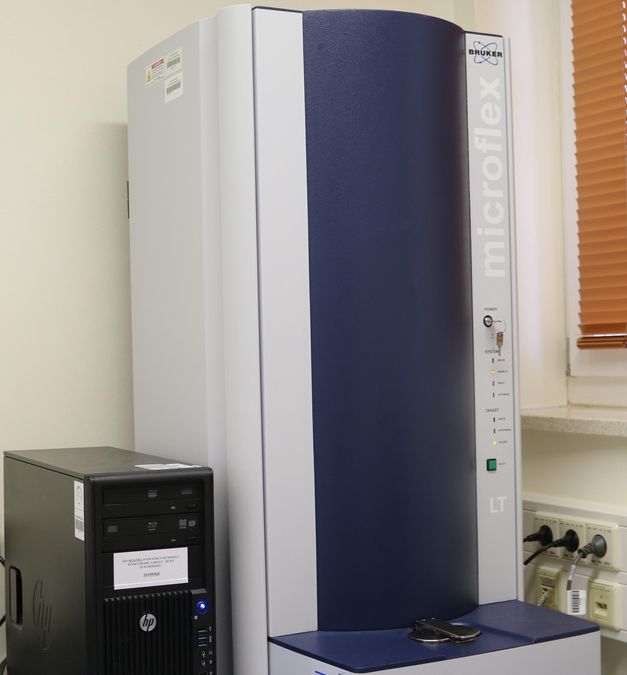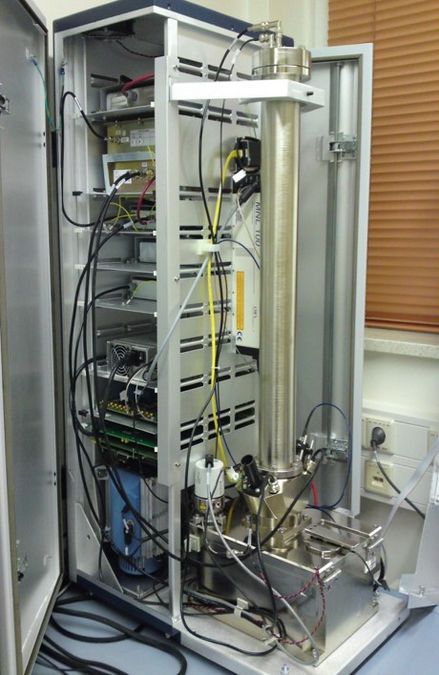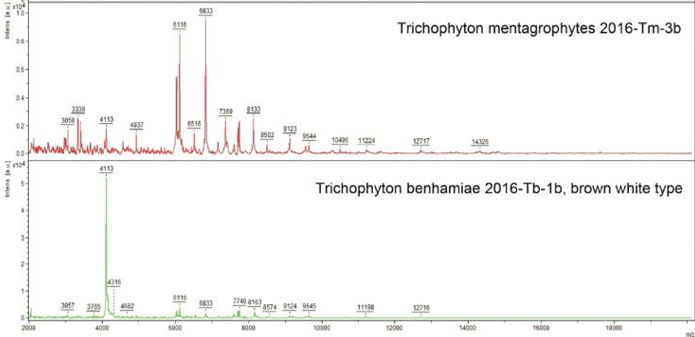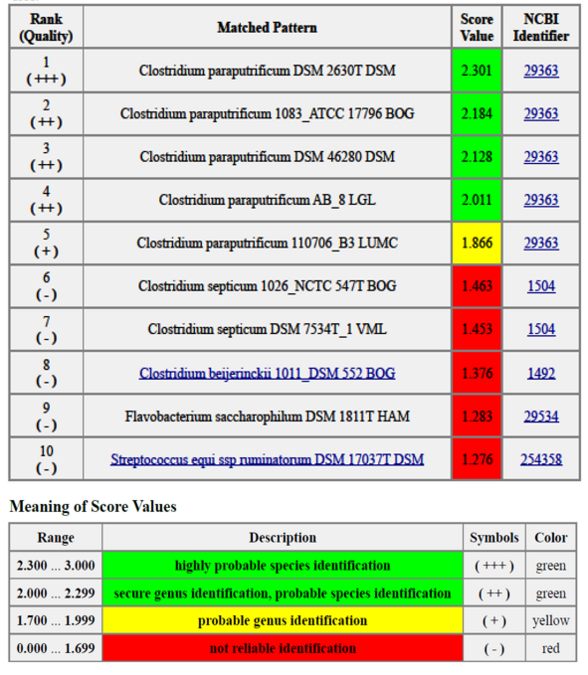The Core Unit CUMI belongs to one of three Core Units of the Faculty of Veterinary Medicine and is coordinated by scientific staff of the Institute of Bacteriology and Mycology. We have a MALDI-TOF mass spectrometer that enables the identification and differentiation of microorganisms. Our institute has several years of expertise in the differentiation of bacteria and fungi using MALDI-TOF-MS.
Core Unit „Mass spectrometric identification and differentiation of microorganisms“ (CUMI)
MALDI-TOF is a mass analysis combining Matrix Assisted Laser Desorption Ionization (MALDI) with Time of Flight (TOF) analysis. Since MALDI-TOF-MS is a label-free method without dyes, antibodies or radioactive elements, it is available for a wide range of applications. At the Institute of Bacteriology and Mycology the microflex LT/microflex LRF MALDI-TOF-MS (Bruker Daltonics GmbH) is currently used for the identification and differentiation of microorganisms (bacteria, fungi and yeasts). In addition, subtyping and targeted resistance determination can be carried out within the methodological limits. In the coming months, the previous model will be replaced by a more powerful device, which will lead to the establishment of the new core unit "Mass Spectrometric Identification and Differentiation of Microorganisms" (CUMI).
The core unit will be supervised by Prof. Wieland Schrödl and technical staff. With their MALDI-TOF-MS expertise, they provide advice for the planning and implementation of upcoming projects.
- The sample is placed in a low-molecular matrix and fixed on a carrier.
- The matrix sample mixture is vaporized explosively in a high vacuum by a pulsed focused laser beam (desorption).
- The analyte molecules (proteins) of the pathogens to be investigated are ionized (ionization).
- The ions are then accelerated in a strong electric field and their respective flight times (TOF) are registered, whereby smaller, lighter Ions hit the detector faster.
- Since the flight time of the analytes depends on their mass (m) and their charge number (z), the different masses of the individual analytes can be determined and displayed as a total spectrum.
- The respective spectra are characteristic for the individual bacteria and fungi, which makes microbial identification possible. This is done by comparing the determined spectra with a reference database integrated in the system, which compares the spectra of a large number of bacteria and fungi relevant to human and veterinary medicine.
- The database comparison also generates a score, which provides information on the validity of the differentiation result.
Since the software-based comparison is automated and takes place without loss of time, microbial identification takes only a few minutes from the time the sample is applied to the carrier plate until a differentiation result is available.
The spectra database of the manufacturer (Bruker Daltonik GmbH) is updated annually and currently contains 2462 species entries corresponding to a sum of 6904 main spectra/master spectra (MSP). In the past 10 years, this database has been considerably expanded by scientific staff of our institute by adding more than 3200 master spectra. The database of the manufacturer has been extended especially for the following pathogen groups: Dermatophytes, Mucorales, Clostridium spec., Brachyspira spec., Rodentibacter pneumotropicus, Rodentibacter heylii and Muribacter muris. The database extensions for the murine pathogens were carried out in cooperation with Bruker Daltonik GmbH. Furthermore, the database was extended to include the genera Yersinia, Bacillus and Burkholderia by data transfer with the Robert Koch Institute.
Measurements by internal and external users take advantage of the Institute's own database extensions.
The core unit is available to internal and external users on the basis of a current fee schedule. This addresses institutes and scientific staff of the Faculty of Veterinary Medicine as well as other faculties of the University of Leipzig, external scientific research institutions and private sector clients.
The CUMI is basically run as an operator unit in which the measurements are carried out by a trained person of the institute. This concerns in particular the routine identification of microorganisms. Specific agreements have to be made in advance with the director of the institute or instrument operator in order to deal with special questions and more extensive projects.
Further information on the use of the CUMI as well as the current fee rates can be found in the user regulations
.
In order to use the MALDI-TOF-MS of the CUMI, it is necessary to fill in the order form.
The cultivation of the cultures and the processing of the samples are usually carried out by the user. For the MALDI-TOF-MS analysis, a small amount of a colony is applied to an analysis position (target spot) of the MALDI sample carrier. A microlitre of a matrix solution (HCCA: α-Cyano-4-hydroxycinnamic acid) is then pipetted onto the samples. The sample carrier is handed over for measurement with the completed order form, on which the loading of the sample carrier is to be entered.
In principle, the Institute for Bacteriology and Mycology as operator of CUMI guarantees that a sample carrier received for measurement is measured within 24 hours on a working day. Should this not be possible in exceptional cases, the user will be informed of the delay within this time.
The results (identifications) are made available to the user in a so-called score report as a PDF file. Assistance and explanations are offered to the user. Further data evaluations in cooperation with the user require mutual agreement.
Should you not be able to grow the cultures and process the samples, please contact Prof. Wieland Schrödl, who will discuss the further procedure and individual pricing with you.
The current fee rates for the identification of microorganisms and the measurement of target spots using the MALDI-TOF-MS technology can be found in the user regulations
.
The CUMI offers the possibility to work with pathogens of risk group 2 according to the Ordinance on Biological Substances (BioStoffV).
